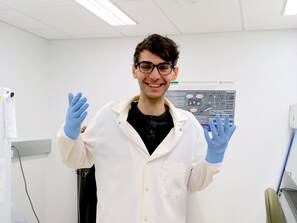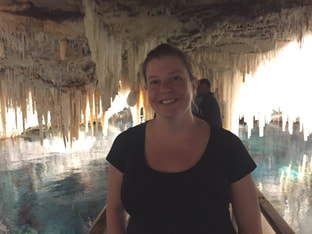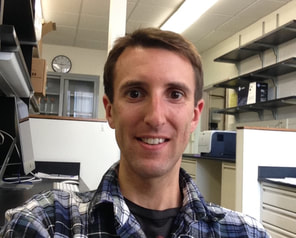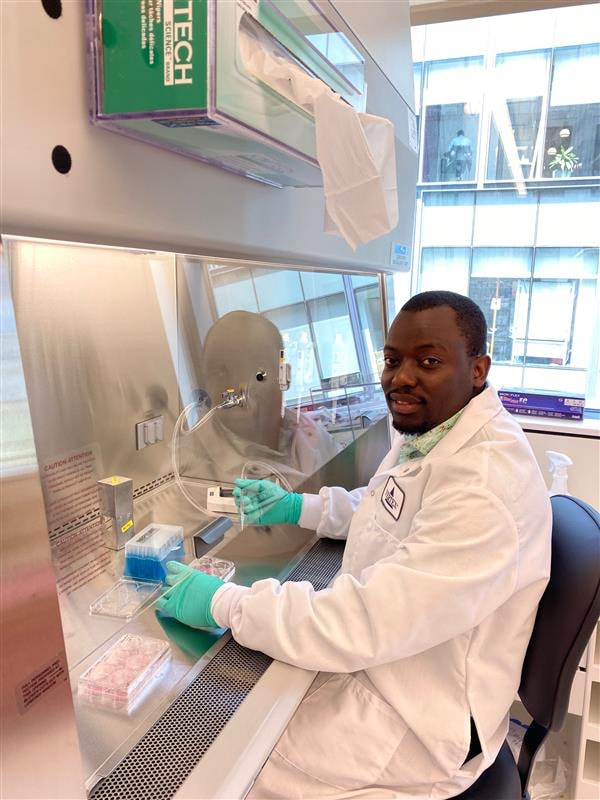Graduate Students

Christopher Claypool
Chris is a 5th year Ph.D. student in Organismic and Evolutionary Biology. The lab is interested in primate neural evolution and Chris is particularly interested in the evolution and development of the brain and cognition in great apes, including humans. His current research is looking at the evolution of the prefrontal cortex, an expanded region of the great ape brain that allows for higher cognitive functions in humans. He also works with primate induced pluripotent stem cells (iPSCs) to generate brain cells in vitro to investigate brain evolution on a cell-type specific level.
Chris is a 5th year Ph.D. student in Organismic and Evolutionary Biology. The lab is interested in primate neural evolution and Chris is particularly interested in the evolution and development of the brain and cognition in great apes, including humans. His current research is looking at the evolution of the prefrontal cortex, an expanded region of the great ape brain that allows for higher cognitive functions in humans. He also works with primate induced pluripotent stem cells (iPSCs) to generate brain cells in vitro to investigate brain evolution on a cell-type specific level.

Mélise Edwards
Mélise Edwards is a 5th year PhD Candidate in the Neuroscience and Behavior program. Her interests include primatology, evolution, neurodegeneration, RNA-sequencing and industry careers. Her research in the lab focuses on how prodrugs for steroid hormones affect homeostasis and neuropathology with age in primate-derived iPSCs and non-human primates. In addition, Mélise is interested in sex differences and cell-type specific differences in gene expression and metabolism. To learn more about her research, visit her website at https://meliseedwards.com/.
Mélise Edwards is a 5th year PhD Candidate in the Neuroscience and Behavior program. Her interests include primatology, evolution, neurodegeneration, RNA-sequencing and industry careers. Her research in the lab focuses on how prodrugs for steroid hormones affect homeostasis and neuropathology with age in primate-derived iPSCs and non-human primates. In addition, Mélise is interested in sex differences and cell-type specific differences in gene expression and metabolism. To learn more about her research, visit her website at https://meliseedwards.com/.

Katherine Rickelton
Katie is a 4th year Ph.D. student in the UMass Molecular and Cellular Biology Program. In the Babbitt Lab, her research focuses on the evolution of the primate cerebellum, specifically in the context of cognition and uniquely-human traits. Katie is also interested in looking at primate brain evolution from the cellular level, in order to understand functional differences between neuronal cell types – such as astrocytes. She hopes to eventually extend these cell-type specific studies to full-organoid based structures for analyses. Katie works primarily with RNA-seq data and various bioinformatics programs, as well as with primate induced pluripotent stem cells (iPSCs) to investigate primate brain evolution.
Katie is a 4th year Ph.D. student in the UMass Molecular and Cellular Biology Program. In the Babbitt Lab, her research focuses on the evolution of the primate cerebellum, specifically in the context of cognition and uniquely-human traits. Katie is also interested in looking at primate brain evolution from the cellular level, in order to understand functional differences between neuronal cell types – such as astrocytes. She hopes to eventually extend these cell-type specific studies to full-organoid based structures for analyses. Katie works primarily with RNA-seq data and various bioinformatics programs, as well as with primate induced pluripotent stem cells (iPSCs) to investigate primate brain evolution.
Previous Graduate Students
Undergraduate Researchers
Emily Miller Chiruza Muhimuzi




